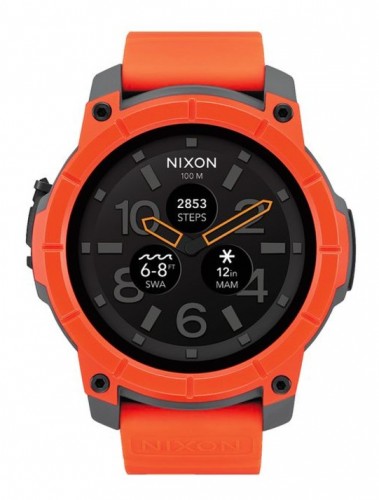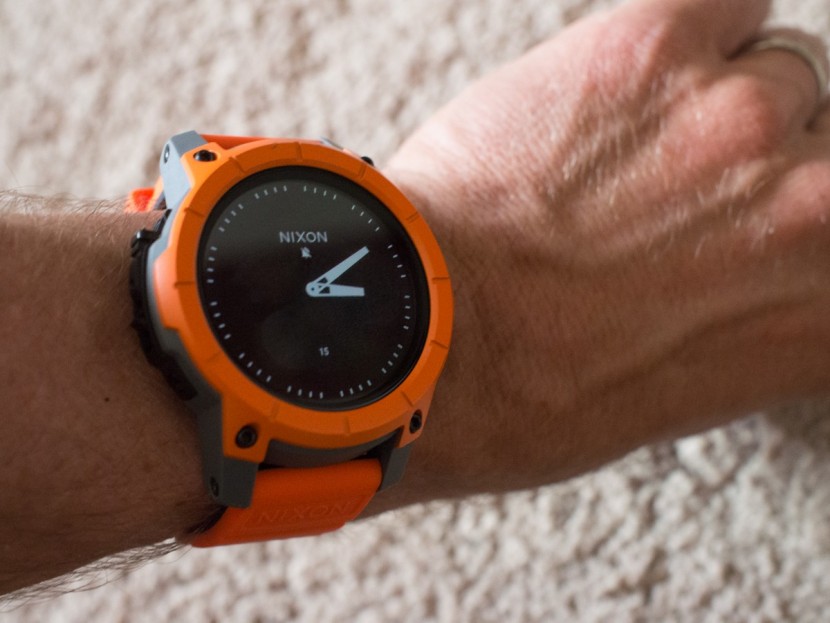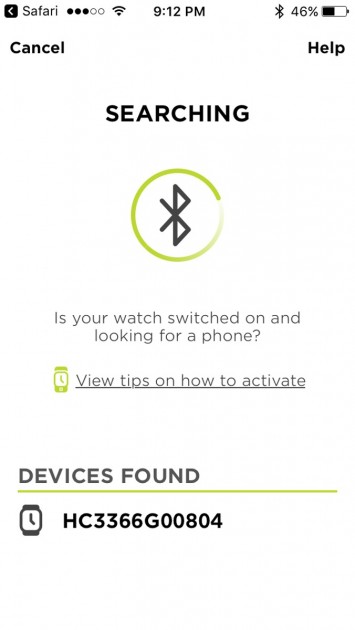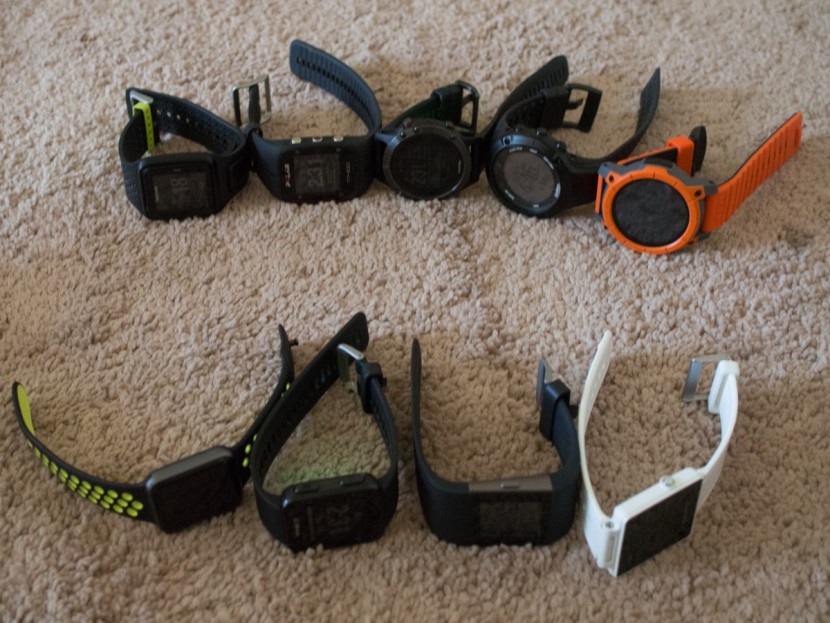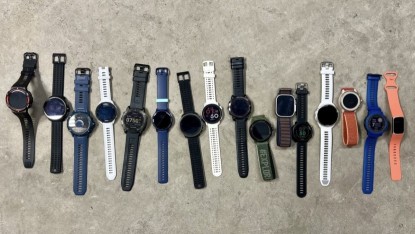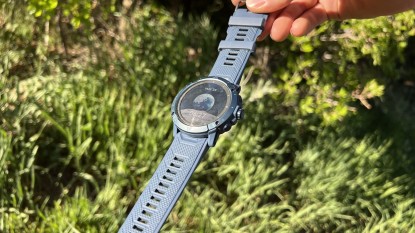Nixon Mission Review
Our Verdict
Our Analysis and Test Results
The Nixon Mission is a smartwatch targeted to athletes. Most of the products we tested are training watches with smartwatch attributes. The Nixon flips the script. As such, it is a good smartwatch that can be applied to training, but with some difficulty.
Nixon wouldn't claim their watch is the best training or GPS watch. It is a smartwatch, with training features. Our testing bears this out. The dedicated training watches perform better against our test matrix than the Mission.
Ease of Use
As a watch, and as a smartwatch, the Mission is great. For training, there are distinct issues. It is clear that the training record keeping is an afterthought. One must perform fairly extensive customization before one can record and view useful running data, for instance. It can be done, but it takes some work. For viewing text messages, setting alarms, and monitoring phone notifications, the Mission is great.
Features
The data the Mission gathers is not nearly as sophisticated or useful as that collected by the perennial training watch manufacturers like Garmin, Suunto, or Polar. The Mission counts steps and uses its GPS antenna to track your outside mileage and speed. Otherwise, the data is fairly limited. Of all the features we look for in a modern training watch, the Mission has surprisingly few. The Editors' Choice Garmin Forerunner 935 has integrated heart sensing, accelerometer, step count and sleep tracking, GPS antenna, barometric altimeter, smartwatch function, and extensive navigation function. Of these, the Nixon has step count, GPS, and smartwatch function. It is far less featured than the most featured devices. If all you want is these rudimentary features, the Nixon could be just right.
Accuracy
The Mission recorded consistently 7% greater distance than we actually traveled. This is the least accurate distance record keeping in our entire test. Why this is, is hard to tell. GPS signal coming from satellites is standardized. All devices get the same information. A device's antenna can have a small impact on accuracy, but it is usually the software and algorithm the device uses to interpret the satellite signal that is in error. Regardless of why the distance was inaccurate by that amount, the important question is whether it matters. 7% inaccuracy isn't inconsequential, but it also isn't a deal breaker. In the early days of consumer GPS receivers, the signals were intentionally scrambled by the government, leaving about this amount of inaccuracy expected. At that time, we were fine with it and measured and navigated just fine. While we've come to expect something more like the very low average inaccuracy of something like the Suunto Ambit3 Peak (1% inaccuracy), 7% isn't actually a deal breaker.
Ease of Set-Up
It is in set up that the Mission excels. The instructions are simple and clean, directing the user to charge the device and work then with your smartphone and the Android apps (Nixon uses Google's open source smartwatch platform. It still works with an Apple phone). The apps walk you through the setup. The Mission is one of the best of our watches in ease of set up. The Garmin devices all work similarly. The Apple Nike+ and Mission are comparable. Both start with an app and walk the user through the necessary steps. The Fitbit Surge sets up with an app and a charge, just like the Mission. In short, set up of the Mission is clean and simple. By contrast, the Polar M400 takes tens of minutes to hours to set up while the Mission, after charging, takes just a handful of minutes.
Battery Life
The large form factor of the Mission holds a sizable battery. With limited features and sensors, that battery powers the instruments of the Mission for a long enough time. In a normal athlete's life, with everyday use plus an hour or two of GPS tracking most days, the Mission needs to be charged every few days. In a refreshing revelation, we found that the Mission battery actually lasts longer than Nixon claims. They claim one day of battery use, but we regularly found it to work for two to three times that long, at least.
Other products have batteries that last longer, while others last less. The Mission is clearly better on battery life than the Apple Watch. Even when we account for the size and functional differences (the Apple is smaller, and does more, so it makes sense that the battery life is less), it seems that the Mission is a little better on battery. The Garmin Fenix and Forerunner 935, however, do way better on battery. These watches are similar in size and track your heart rate continuously, and the battery lasts, all else equal, about 2-3 times longer than the Mission. Of the products optimized for daily use (Apple, Mission, Fenix, Forerunner 935, and Garmin VivoActive all have step counts, smartwatch features, GPS tracking, and appearances that lean toward “daily wear” more than others) the VivoActive is the clear winner in battery life. One tester was able to regularly go weeks of normal use between charges with her testing of the VivoActive.
Portability
The Mission is the largest watch we tested. For some, this is appealing. It is a product that makes a statement, like some want from their watches. For others, it is too bulky. The tested orange color scheme shouts “look at me”. Again, some like that while others don't.
On small wrists, the Mission is simply too large. We tested the standard Garmin Fenix 5 and the smallest Apple Watch, but we dig that each of these is available, with the same features but different battery lives, in other sizes. The Mission, however, is available in just the one large size.
Best Applications
Nixon positions the Mission as a daily smartwatch for the adventurous athlete. They equip it with specialized “snow” and “surf” apps for both monitoring conditions and for tracking endeavors. The smartwatch functionality is nearly complete, competing directly with the Top Pick Apple Nike+. Because of the size, it will likely appeal mainly to men. The features are great in every-day life and suitable for occasional tracking of athletic endeavors.
Value
Only the highest-end Garmin models, the Fenix 5 and the Forerunner 935, are more expensive than the Mission. For that additional price, the Garmin models have twice as many athlete's sensors and features, and they get you more battery life. At the Mission price point, the best comparison is the Apple Watch. Stylistically these two have a different appeal. The Apple model is limited to those that already use an iPhone; it also has better athletic endeavor tracking, with an integrated heart rate sensor and more options for tracking apps. The Apple Watch is better for navigation too. The Mission, in comparison to the award winners, is not a great value. If, however, the style appeals to you, it is likely worth the price.
Conclusion
As a smartwatch tailored for the adventurous athlete, the Mission hits the mark. As a dedicated athlete's tool, it is less functional than the other products in our test.


